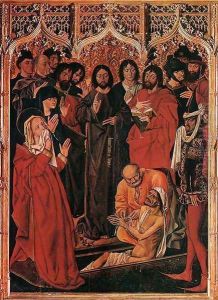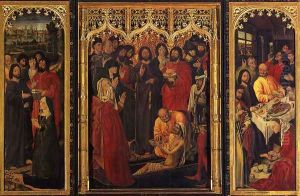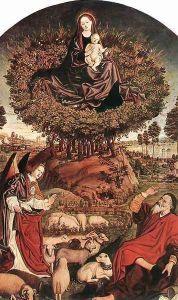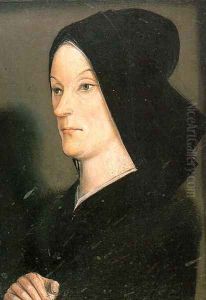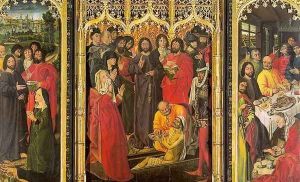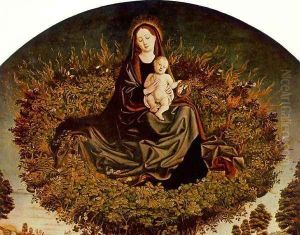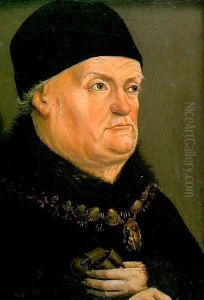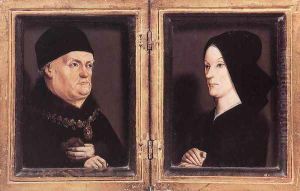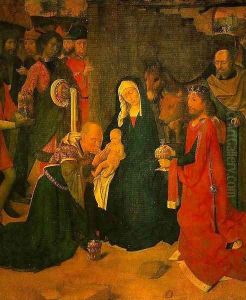Nicolas Froment Paintings
Nicolas Froment was a notable figure in the world of French painting during the Renaissance period. Born around 1435, the precise details of his early life remain somewhat obscure, as is common with many artists of this era. However, what is clear is that Froment's work played a significant role in the development of French art during the 15th century, melding influences from Northern Europe with the emerging Renaissance styles.
Froment is primarily known for his detailed and vivid altarpieces, which exhibit a keen observation of nature and a meticulous approach to representation, characteristics that were highly valued during the Renaissance. One of his most famous works is the triptych 'The Burning Bush', painted for King René of Anjou, which depicts Moses before the burning bush, a scene that showcases Froment's ability to weave complex theological themes with intricate natural detail. This piece, housed in the Cathedral of Saint Sauveur in Aix-en-Provence, stands as a testament to his skill and the influence of the Flemish school on his technique.
Throughout his career, Nicolas Froment was influenced by the works of Flemish and Italian artists, blending the realism and detailed landscapes typical of Northern European art with the emerging humanistic themes of the Italian Renaissance. This synthesis helped to lay the groundwork for the development of a distinct Provençal school of painting.
Despite the recognition of his talent during his lifetime, Froment's work fell into relative obscurity after his death around 1486. It wasn't until centuries later that his contributions to the art world were reevaluated, leading to a renewed appreciation of his role in the evolution of French Renaissance art. Today, Froment is celebrated for his contributions to blending Northern and Southern European artistic traditions, marking him as a key figure in the transition towards the High Renaissance in France.
